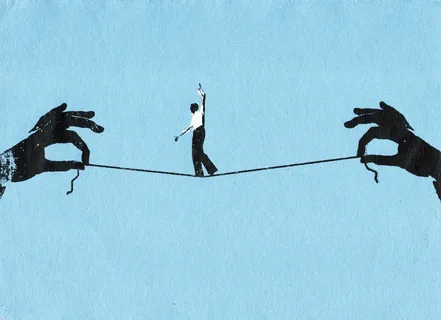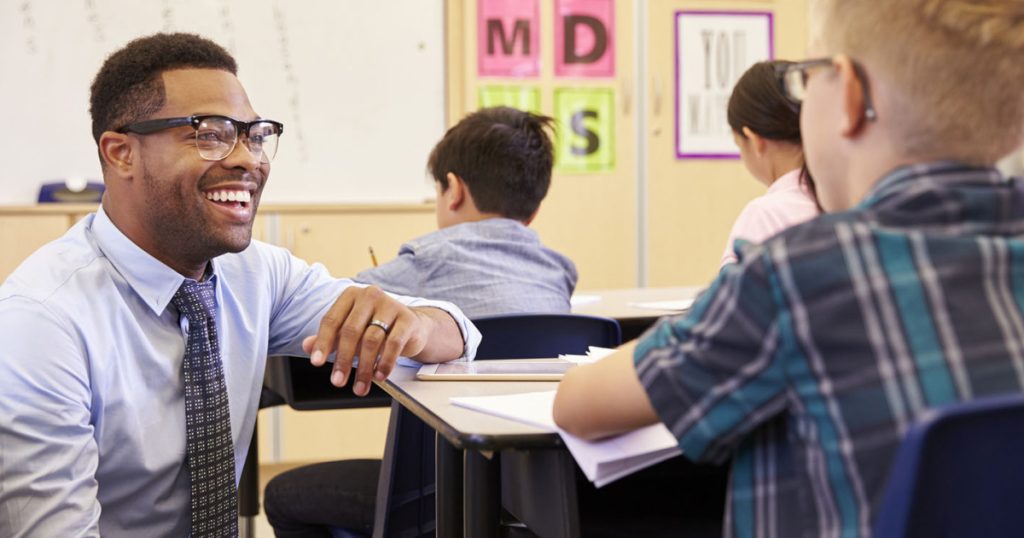
People often tell us to “follow your passion” in today’s fast-paced world. People give this advice in graduation speeches, self-help books, and career coaches. Passion is shown to be the holy grail, the magical force that gives life meaning, satisfaction, and even success. But what do you do when that passion starts to feel like stress? It can be harder than it seems to balance what you love with the weight of expectations, whether they come from inside or outside of you. Pressure can make you tired, but passion can give you energy. And when these two things happen, burnout is not far behind. How do you follow your passion without letting it take over your life? How do you keep going without hurting your mental health? Let’s talk about the book Learning Life Lessons Through Teaching where it also guides us to look at the tricky dance of balancing passion and pressure, and how you can stay grounded while you do it.
The Two Sides of Passion
People often romanticise passion. People paint it as a fire that never goes out, a constant source of motivation. But in reality, passion can be a bad thing. If you’re really into something, like art, business, teaching, coding, writing, or a cause, you put in more than just time. You put your identity on the line. That’s when the pressure starts to build. You’re not just making something; you’re making a part of yourself. This can cause:
- Perfectionism: Setting unrealistic standards can happen when you want your work to show your best self.
- Over-commitment: It’s hard to say no when you’re passionate. Every chance seems important.
- Identity entanglement: When your work is your passion, failing feels like a personal failure.
Passion is also what helps you get through hard times. It gives people the drive to keep going, be creative, and bounce back. But it needs limits, even though it’s powerful.
Where does the stress come from?
There are many things that can put pressure on you and get in the way of your passion:
- Expectations from the outside
- Society: The need to make money off of your passion or turn it into a brand.
- Family: They want you to pick safety over creativity.
- Peers: Looking at how you compare to others in your age group or field.
- Expectations from Within
- Deadlines I set for myself: “If I don’t make it by 30, I’ve failed.”
- Fear of wasting potential: “I should be doing more.”
- Identity pressure: “Who am I if I stop going after this?”
These expectations grow over time, and we might not even notice. What starts out as fun turns into work. You’re not doing what you love anymore; you’re trying to show how much you love it.
5 Ways to Find a Balance Between Passion and Stress
Here are some useful tips for keeping your passion alive without feeling too much stress:
- Change the meaning of success
A lot of the time, pressure comes from a narrow view of success that is based on money, fame, or recognition. But there is no one way to be successful. Think about:
- What does success mean to me, not just to other people?
- Is it possible for me to enjoy the process, not just the end result?
- Instead of using metrics to measure success, think of it as growth, learning, or creative freedom.
This can make “making it” less stressful and help you stay grounded.
- Make healthy habits around your passion
Passion doesn’t have to be crazy or all-consuming. Structure can help you use it in a way that lasts. Give it a shot:
- Setting realistic hours for work (even for personal projects)
- Taking breaks often, without feeling bad
- Setting aside time for things you enjoy that aren’t “productive”
Being balanced doesn’t mean doing less. It means doing it in a way that doesn’t hurt you.
- Take care of your mental health
You can’t fill a cup that’s empty. When it comes to achievement or identity, passion can push you to the limit. Make room for:
- Therapy or coaching
- Writing in a journal to work through feelings
- Talk honestly with peers who know what you’re going through.
When you’re clear-headed, you can tell when your passion is guiding you and when pressure is leading you astray.
- Give Yourself a Break Without Feeling Bad
Rest is not a reward for getting things done. It’s necessary for creativity and long-term survival.
But a lot of people who are passionate about their goals think they’re being lazy when they’re not working on them. Change the story: Rest isn’t the opposite of passion. It is what keeps passion alive.
- Separate identity from outcome
Your passion is a part of who you are, but it is not all of who you are.
Not succeeding at something doesn’t mean you’re a failure. Being successful doesn’t make you more valuable than before. We ride a constant emotional roller coaster when we tie our worth to results. Make space:
- “This project failed” is not the same as “I failed.”
- “I’m having a hard time” is not the same as “I’m not good enough.”
When you stop connecting your identity to your results, you give yourself permission to grow, try new things, and even fail without feeling bad about it.
When Your Passion Changes—That’s Okay
One of the hardest truths is that passions can change. You might stop caring about something that used to give you life. That doesn’t mean you’re flaky or ungrateful. It means you’re a person. It’s okay to: Stop,Turn, Let go. Growth doesn’t always happen in a straight line. Sometimes, the most honest and brave thing you can do for yourself is to leave something behind.
Conclusion:
There isn’t a quick fix for the balance between passion and pressure. It’s a rhythm you learn to dance to for the rest of your life. There will be days when the stress is stronger than the passion. And days when the passion is strong enough to get past the doubt. Both are normal. There is no one-size-fits-all way to balance passion and pressure. But if you are intentional, aware of yourself, and kind to yourself, you can keep showing up because you love what you do, not because you are afraid. Don’t let your passion be a burden; let it guide you.






